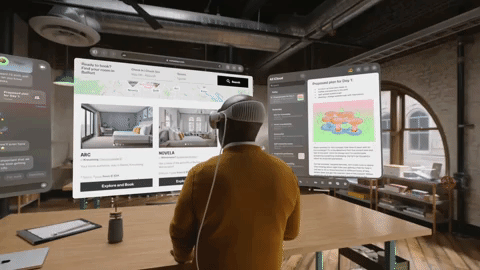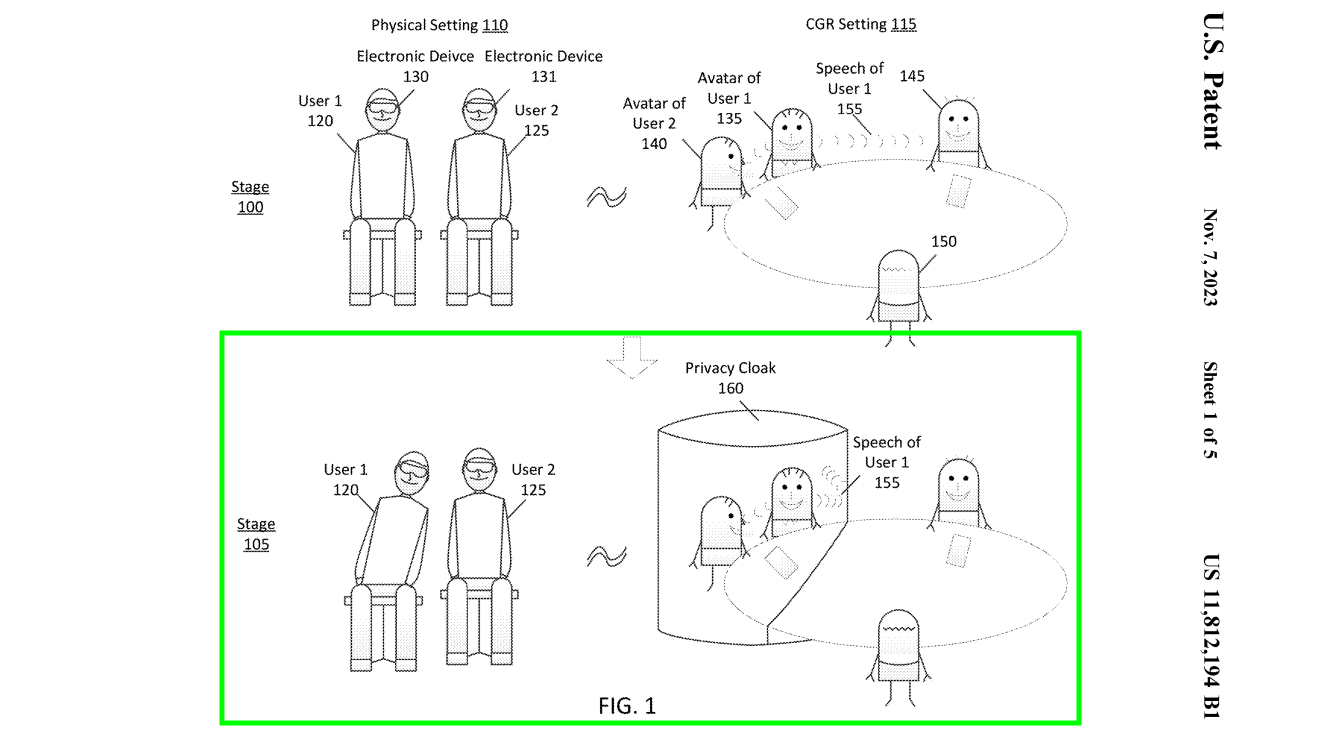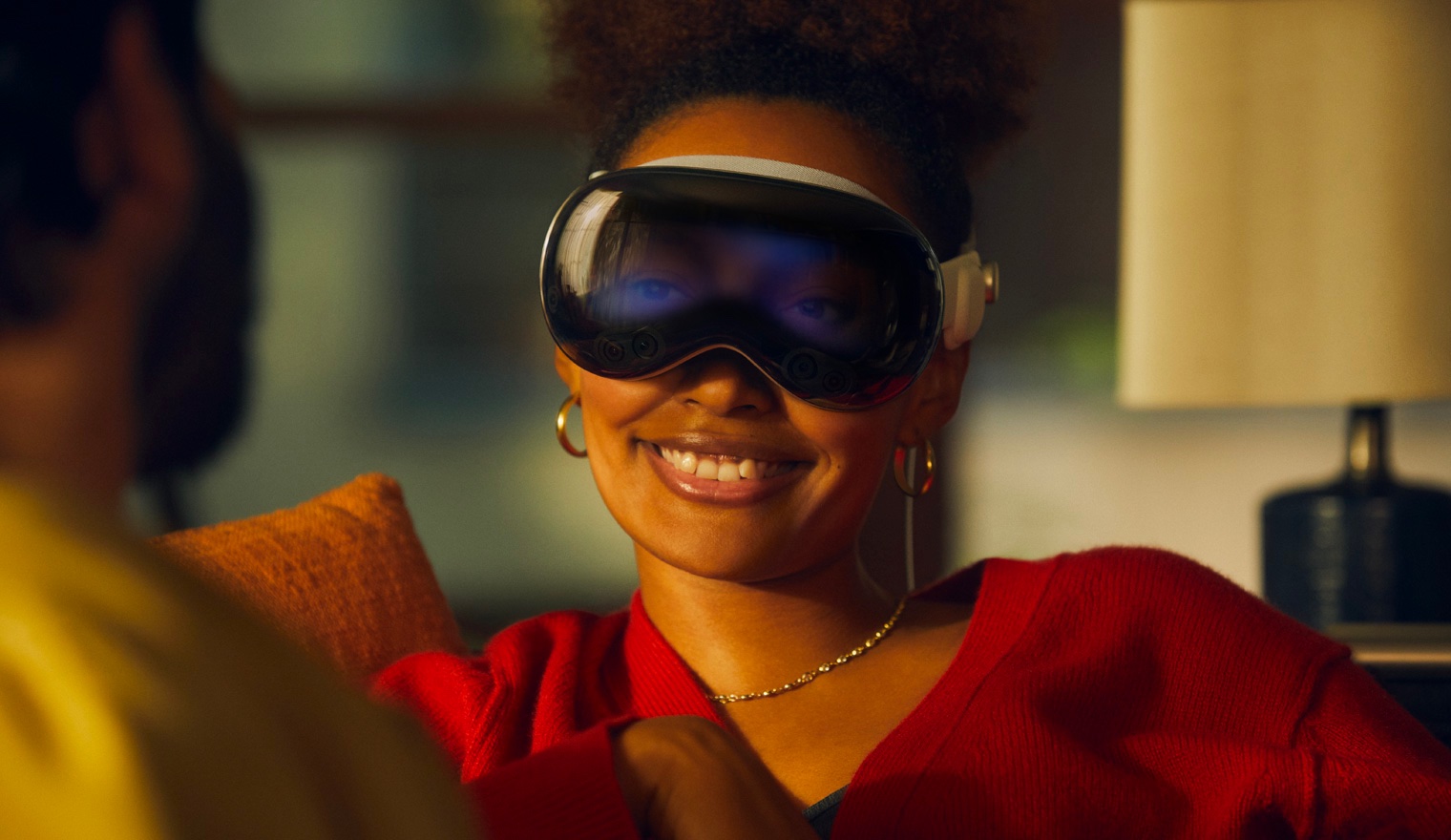Apple Vision Pro may let you draw a ‘privacy cloak’ around you and a friend — here’s how
Get ready to gossip with confidence in AR, VR and beyond

Word from the U.S. trademark office is that Apple's been granted a patent for a "privacy cloak" feature that allows Apple Vision Pro wearers to have private conversations in a "computer-generated reality" — and who wouldn't appreciate being able to draw up a little privacy cloak among friends?
While there's no guarantee this feature will ever exist or show up in Apple products, the way it's outlined in this patent gives us a better idea of how Apple envisions people interacting inside computer-generated spaces, and that's as naturally as possible.
Notably, the patent application (brought to our attention by Patently Apple) outlines how this feature allows "the first user to engage in a private conversation with a second user [...] while both users are participating in a computer-generated reality."
This so-called "privacy cloak" is engaged when a sensor on a headset detects one user is moving in a way which indicates they want to have a private conversation with another, say by leaning their head in close to someone else.
When the feature activates, "the [headset] causes a virtual/visual privacy cloak to activate in the CGR setting that includes the first and second user's avatars ...] where speech of either user is not projected out of the privacy cloak" and is instead transmitted between the users in the privacy cloak via a "two-way private audio channel" established between their headsets.
Notably, Apple is vague about what product(s) can or will support this "privacy cloak" and specifically states that any such feature which may appear on future products may utilize different combinations of data, motion and gestures to trigger or create the private speaking area.
So the patent leaves room for Apple to change details like whether those in the privacy cloak do or do not hear what's going on in the surrounding virtual environment, whether the visual appearance of avatars in a privacy cloak appear different (say, by blurring their outlines or color-coding them), whether other users can request to enter a privacy cloak and more.
Get instant access to breaking news, the hottest reviews, great deals and helpful tips.
This sounds like promising news for privacy-minded Apple Vision Pro enthusiasts, especially those who are excited about the possibilities of virtual meetings and multiplayer games. Even if you're not interested in Apple's head-mounted "spatial computer" it's intriguing to see how one of the biggest tech companies on the planet is trying to solve the problem of recreating real human experiences in computer-generated spaces.

It's a pressing problem because the Vision Pro is slated to hit U.S. Apple store shelves in early 2024, and when it does, we predict lots of Apple fans will line up for the chance to pay $3,499 for one. What's less easy to predict though is what they'll do with an Apple headset once they own one.
We know the headset will be able to sync and interact with other Apple products, like your MacBook, and it will be able to run iOS and iPadOS apps in addition to new visionOS apps. What we don't yet know is how comfortable or natural it will feel to spend serious time interacting with these technologies when they're floating in front of your face.
In our recent Apple Vision Pro hands-on we found the experience of using one to be cool and exciting, even if some of Apple's decisions about how to help people interact with each other in the headset and outside of it seemed slightly creepy.
The way that the Vision Pro can map your facial expressions and hand gestures onto a customizable 3D "Persona" that stands in for you during FaceTime calls, for example, or the way it displays a close-up of your face on the exterior lens in EyeSight mode (what's that on your headset? Surprise, it's your eyes!) seem like they'll take some getting used to.
But if Apple does build features like the "privacy cloak" outlined in this patent into the Apple Vision Pro, we may be seeing the foundations being laid for the next generation of AR/VR experiences.
The extravagant price of the first Apple Vision Pro seems likely to put it beyond the reach of all but the rich and tech-obsessed. If Apple follows up that pricey ask by delivering a wearable computing experience that's more dynamic, comfortable and intuitive to use than what competitors like Meta are offering, the Apple Vision Pro could be the first of many Apple headsets that redefine how we interact with each other in virtual spaces.
More from Tom's Guide
- Apple Vision Pro vs Meta Quest 3: What we know so far
- You’ll probably need an Apple Vision Pro custom fitting — here's why
- Forget Apple Vision Pro — the next headset sounds way better

Alex Wawro is a lifelong tech and games enthusiast with more than a decade of experience covering both for outlets like Game Developer, Black Hat, and PC World magazine. A lifelong PC builder, he currently serves as a senior editor at Tom's Guide covering all things computing, from laptops and desktops to keyboards and mice.


